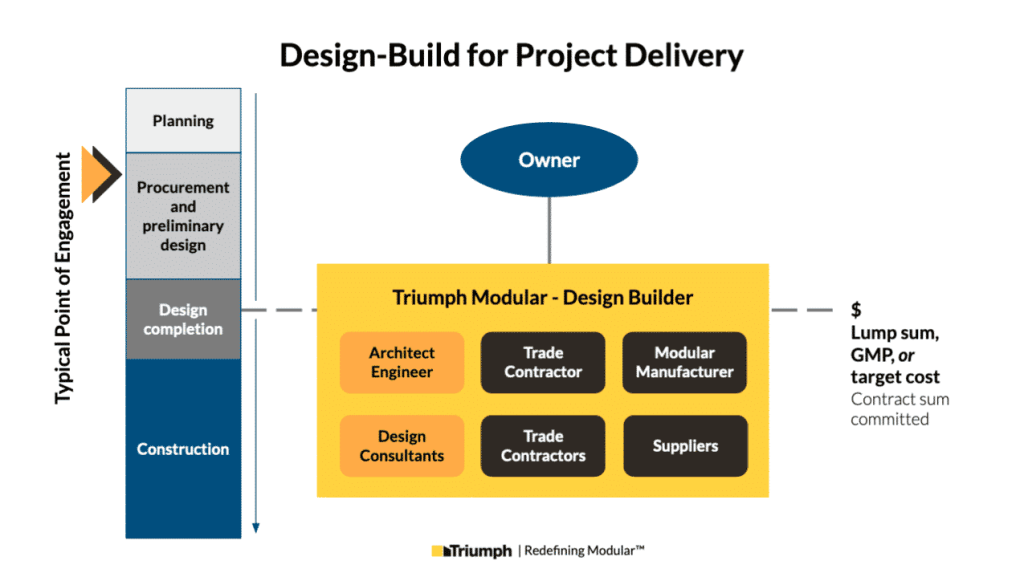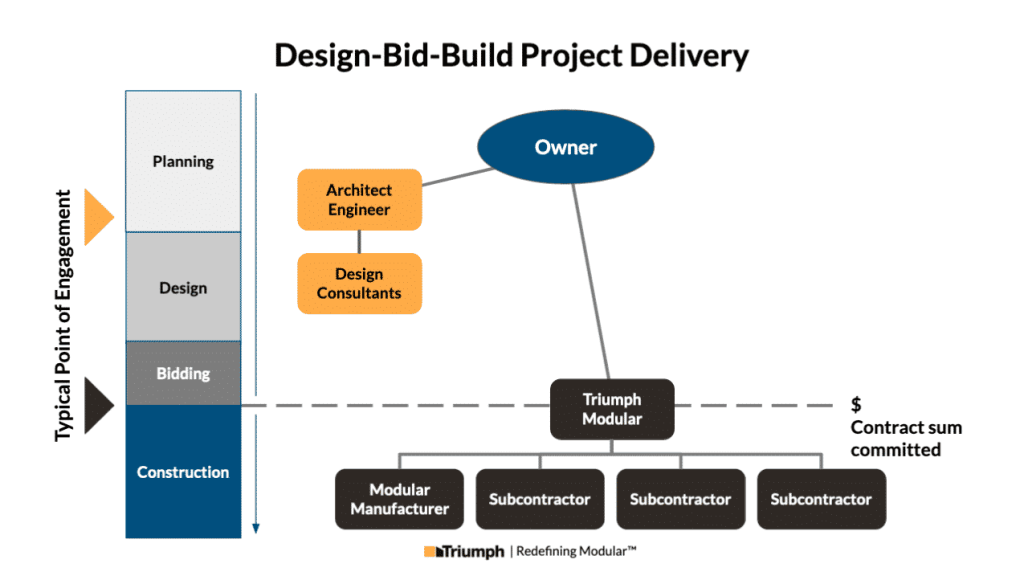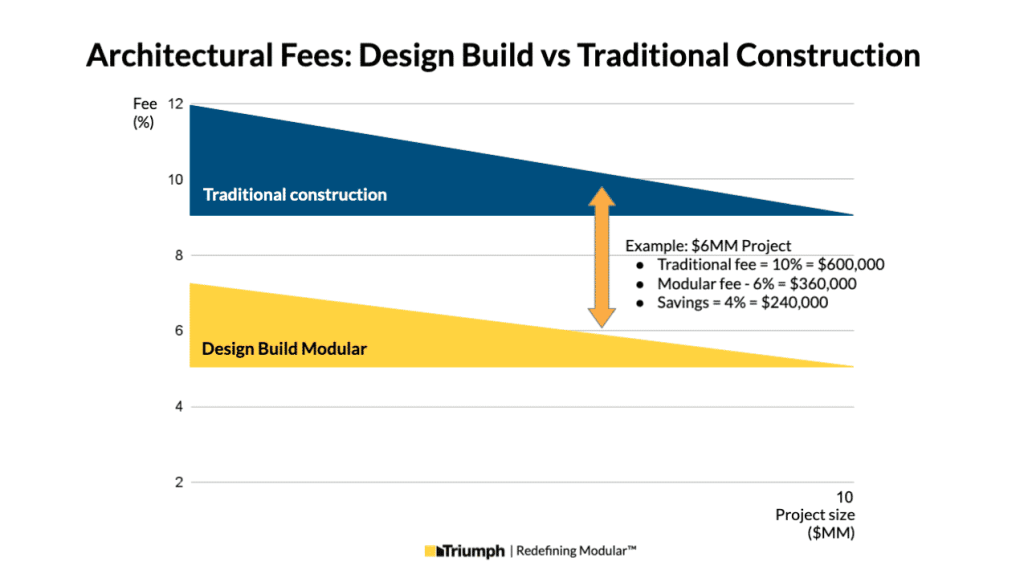In Part 1 of this blog, we provided context for how the architect’s role in a modular project may be different from conventional construction. When you split a project into two tracks, off-site manufacturing, and on-site installation, it is important to stitch together the design and engineering contractual responsibilities in a very intentional way.
Particularly where pre-designed and engineered systems are being utilized, our clients often wonder what the role of their architect should be, and if they play a lesser role in some way. They also ask about the cost of design services in a modular project.
The short answer is: Every commercial construction project should have one overarching project architect with responsibility for the design, and their risk profile in a modular project does not change. However, particularly in “Design-Build” modular, the project architect does benefit in material ways that can reduce their fees when compared to conventional design-bid-build construction.
The Modular Process
First off, the modular process adds several layers of formal review and approval of modular building plans. The review and stamp of the modular manufacturer, the approval of the state-licensed third party, and the state review of building plans for code compliance. The additional oversight for code compliance concerning all concealed elements of the off-site building construction is real.
Secondly, volumetric modular is an accelerated form of construction that is inherently faster, particularly when the players are applying best practices. Therefore, your modular project should be of much shorter duration than a conventional project regardless of design complexity.
Finally, the Design-Builder (a.k.a. the modular contractor, the installer, or the construction manager) takes the primary contract with the Owner. We provide essential design assistance, purchase the modules, and ensure all state codes are met. We apply for all local permits and take responsibility for the whole project.
To decide if modular is the right course, the architect needs to formally consult with the modular manufacturer (or several) and the Design-Builder/Construction Manager before going any further. These consultations will ensure the design will meet the needs of the modular process while assisting in owner cost savings. Modular should be chosen as early in the planning and design as possible for efficiency, but certainly no later than the schematic phase.
If modular is chosen, the architect will, according to best practices, continue to work very closely with the modular manufacturer and construction manager.
The Design-Build for Project Delivery Method
The contracting structure or project delivery method that we have seen work best is Design-Build (See Design-Build method diagram).

Owner contracts with Design Builder
- (Owner may have a long-term relationship and or a planning engagement with an Architect, who stays on to provide consulting and limited construction administration for Owner, but this is not required)
Design-Builder with Architect
Design-Builder with Modular Manufacturer
The Design-Bid-Build Project Delivery Method
In the situation where the owner wants to retain a direct contractual relationship with his architect, the relationships will resemble Design-Bid-Build project delivery but need to adapt to the integration requirements of modular (See Design-Bid-Build method diagram).

Owner – Architect
- (Architects seek formalized design assistance)
Owner – Construction Manager
Construction Manager – Modular Manufacturer
- (The construction manager will purchase the modules and provide formal design assistance)
Modular Manufacturer – Architect
- (To ensure an integrated approach, tie together state and local permit drawings)
Architectural Fees
In Design-Build Modular we have found that the designer of record recognizes the benefits of collaboration, technical assistance, and time savings and this has resulted in lower fees. (Please see representative fee example).

What is most important to any construction project is that roles and responsibilities are clear. When they are, people understand their risk and can set fees fairly and responsibly. This should result in parties providing the owner the best possible value and enjoying the project.
Related content: Is Modular Construction Less Expensive than Conventional?
Disclaimer: The foregoing is not offered as or should be taken as code or legal advice. You should contact the regulatory authorities having jurisdiction over manufactured structures in your state or a state-licensed third-party inspection agency for further guidance. Each state is different in how it deals with these issues.




